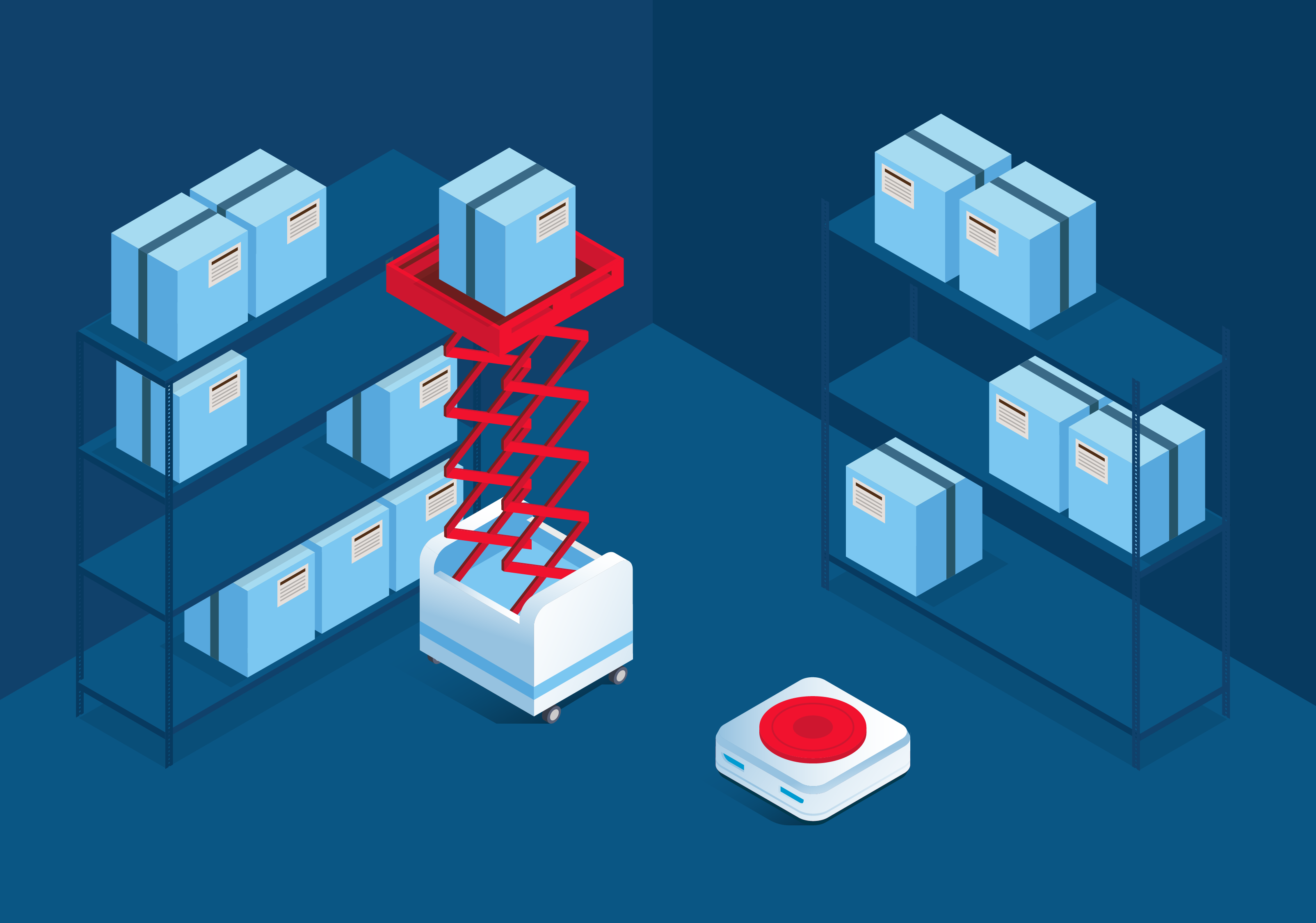We live in a world of online shopping and near instant fulfilment. Getting the goods we buy to our door as quickly as possible demands more, bigger and faster operating warehouses. Many believe that robots are being used to do most of the work in these massive fulfilment centres, but the reality is that in most it is people who are rushing up and down the aisles finding and ‘picking’ products from shelves and preparing them for delivery.
The number of robots in logistics is increasing, but their role, especially in Europe, is still limited. Why is this – and what needs to change to enable robots to take on the lion-share of the picking, carrying and sorting so that people can focus on higher-level and less gruelling tasks?

Warehouse full of robots with people doing the work
Currently, warehouse robots are mainly used for heavy lifting - either unloading or stacking pallets like this one from Boston Dynamics, carrying loads picked by humans like these from Fetch and Locus, or for moving entire shelves, like these Geek+ and Amazon robots which bring shelves to human workers. They usually operate on specified routes or even custom-built frameworks like these Ocado warehouse robots which means they can move quickly and efficiently to manage pre-determined tasks. But it also means that they are quite inflexible and cannot respond to change in real-time. Their movement is either controlled by physical ‘rails’ or by signposts and markings on the infrastructure around them. GPS is not accurate enough for precise movement and does not work indoors, so most warehouse robots use some form of laser (LIDAR) to calculate their position and detect what’s around in order to navigate through the warehouse.
This means it is difficult to map ad-hoc routes to pick inventory from a number of shelves in the most efficient manner. Humans, assisted by hand-held computers, are currently still the best solution for doing that. People also have better fine motor skills necessary to pick up small and non-regular shaped packages and are also much better at dealing with changes to the environment around them.
Robots are not good with change: people are!
Warehouses are chaotic and ever-changing places. Anecdotal evidence suggests that the internal environment in a typical warehouse can change up to 50% every hour. Changes in lighting, objects left on the floor, obscured signposts – all can cause robots to fail. Usually this means that they just stop and wait. People tend to go around obstacles, are not thrown by shadows and can navigate using a wide range of reference points.
So, currently, human workers are still required to do the hard work in warehouses. What’s needed to give robots the skills required to share more of this burden and free individuals to take on higher-order, less exhausting and less dangerous roles?
The limitations of most of today’s warehouse robots are limitations of the way they perceive their immediate surroundings, locate themselves, and map their way around the physical space. To try and do this, developers tend to add lots of sensors from lasers and LIDAR, to cameras, accelerometers, to collision detectors, odometers and many others. All of these not only add cost and weight, but also change the physical design specifications. They must also all work together, sharing data in real-time. That takes an expensive and high-powered processor, not to mention fiendishly complex algorithms. The complexity of building a fully autonomous robot, capable of ‘seeing’ what is around it and navigating safely, in real-time, makes it all but impossible to manufacture them as a commercially viable product – human workers are still a far cheaper option.
Solving problems once
But better approaches are emerging. At SLAMcore, we are dedicated to creating cost effective, standardized systems that can enable any robot to navigate. Using two simple cameras of the type you can find in any smartphone, a motion sensor and some very clever software that runs on a low-cost processor, the SLAMcore solution can be designed in to almost any robot to give it the ability to autonomously navigate itself.
We are not going to build our own robots – instead we are licensing our location and mapping solution to those making the next generation of robots. We have solved the issues of localization and mapping for robots, so they don’t have to waste time and money trying to do so themselves. They can get on with creating the robots that can manipulate objects of all shapes and sizes and work alongside people in warehouses. By not only reducing the cost of development and parts needed for an autonomous robot, but radically shortening the time to market, we are also helping these developers create warehouse robots that make commercial sense and can be rapidly deployed.
Fundamentally we believe that our approach will usher in a time when humans don’t need to risk their health and wellbeing working alongside robots in comfort and safety. Robots will not reduce the number of jobs for humans, but allow them to focus on higher level tasks which require fine motor skills and reasoning.
To find out more about our approach contact us here, or if you are interested in working with us, join our early access programme.

